LFC.SUpporters
You'll Never Walk Alone
Anfie ldindex com
David Lynch’s Five Key Takeaways as Liverpool Beat Brighton
 David Lynch assessment highlights Liverpool’s turning point
David Lynch assessment highlights Liverpool’s turning point
Liverpool’s 2–0 win over Brighton at Anfield carried weight beyond the scoreline, and David Lynch’s post-match commentary offered a sharp, measured breakdown of why this fixture mattered. Rather than chasing hype, his analysis focused on context, control and progression, framing the performance as a meaningful step in Liverpool’s recovery rather than a finished product.
Using Lynch’s own words as reference points, five clear key takeaways emerge from his assessment of the game, each shedding light on Liverpool’s current direction under Arne Slot.
[embedded content]
Key takeaways grounded in context and control 1. Match significance outweighed spectacle“This felt like a big game for Liverpool for a number of reasons, coming off a dreadful run and still carrying a lot of uncertainty.”
Lynch was clear from the outset that this was never about entertainment value. Liverpool entered the match stabilised but unconvinced, with recent results masking lingering fragility. Brighton’s quality and preparation made this a genuine examination of progress, not a free hit. The importance lay in what Liverpool needed psychologically as much as tactically.
2. Opposition quality demanded evolution“Brighton are a very, very good side with a lot of quality and a smart young manager, so this was always going to be difficult.”
Rather than framing the win as routine, Lynch emphasised Brighton’s calibre. This contextualised Liverpool’s approach, reinforcing why a conservative European-style game plan would not be enough at Anfield. Liverpool had to meet quality with authority, not caution.
3. Improvement mattered more than perfection“It wasn’t perfect by any means, but perfect can’t be the enemy of good in the situation Liverpool find themselves in.”
This line captured the core of Lynch’s outlook. Liverpool are not yet in a position to chase flawless performances. Incremental gains, structure and results are the priority. The victory represented functional progress, the kind required to climb out of a damaging run and rebuild confidence.
4. Numbers required interpretation, not obedience“I know the numbers suggest it was even, but watching the game, I genuinely felt Liverpool were the better side.”
One of the most important key takeaways was Lynch’s resistance to surface-level statistical narratives. While expected goals painted a tight contest, he argued that game state, shot quality and defensive coverage told a different story. Liverpool’s superiority showed in control and chance management rather than raw data totals.
5. Direction under Slot is becoming clearer“Arne Slot’s job was to make small improvements, baby steps forward, and this felt like a big one.”
Lynch framed the win as evidence of momentum rather than transformation. Slot’s Liverpool are beginning to press with more cohesion, attack with greater freedom and manage games more effectively. Sitting just outside the top four after a punishing spell, Liverpool now have a platform to build on rather than merely cling to.
Perspective over proclamation“This wasn’t about hyping up the performance – it’s just that Liverpool edged it and deserved to win.”
Lynch’s final takeaway was rooted in restraint. The performance did not demand celebration, but it did warrant recognition. Liverpool looked more like themselves, not in full flow, but with enough structure, intensity and clarity to justify optimism.
In that sense, the key takeaways extend beyond Brighton. They point to a Liverpool side rediscovering belief through control, progress through patience, and identity through small, deliberate steps forward.
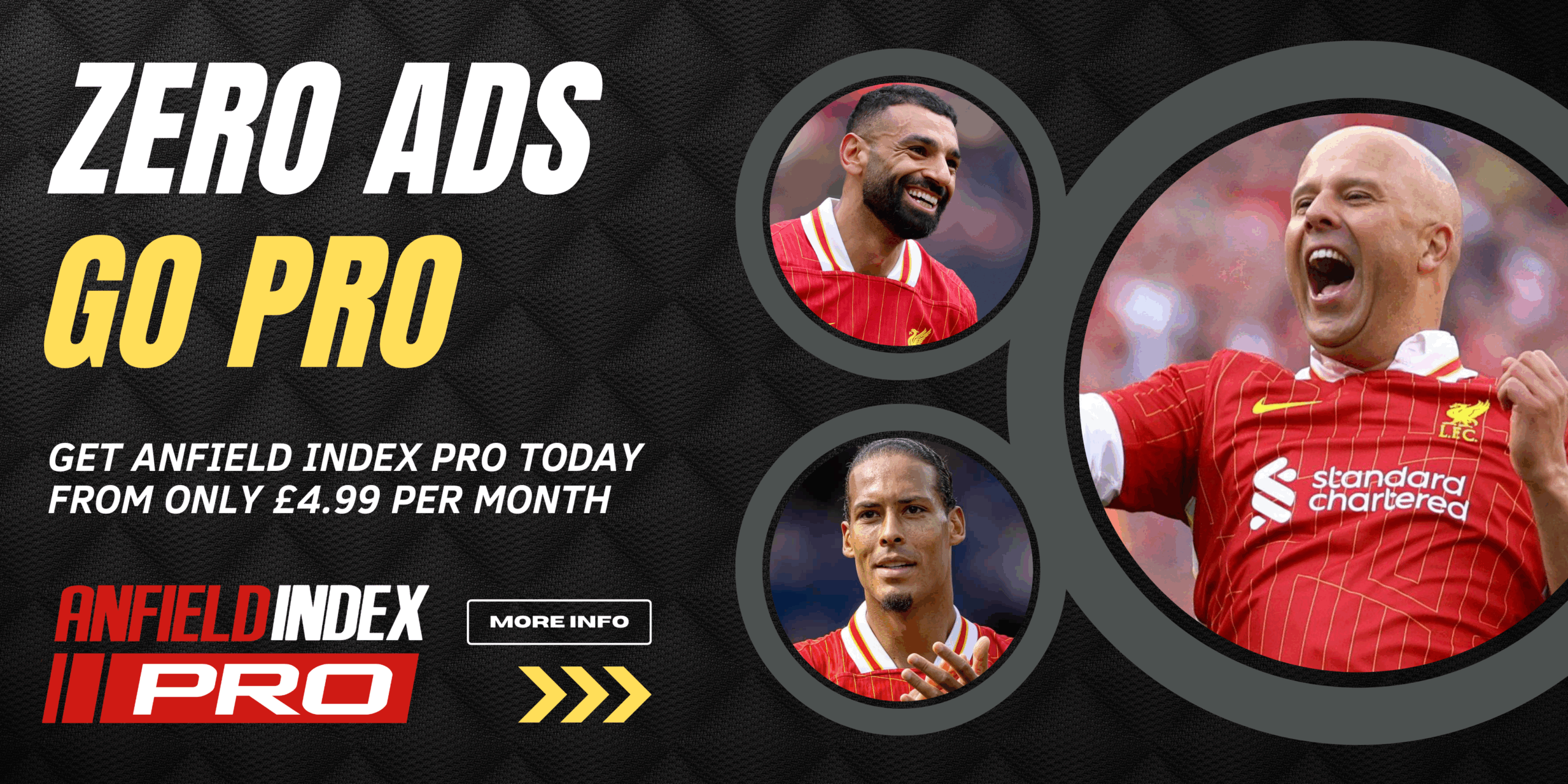
Ekitike Shines as Liverpool Secure Clean Sheet Victory
 Hugo Ekitike
Hugo Ekitike
Liverpool FC
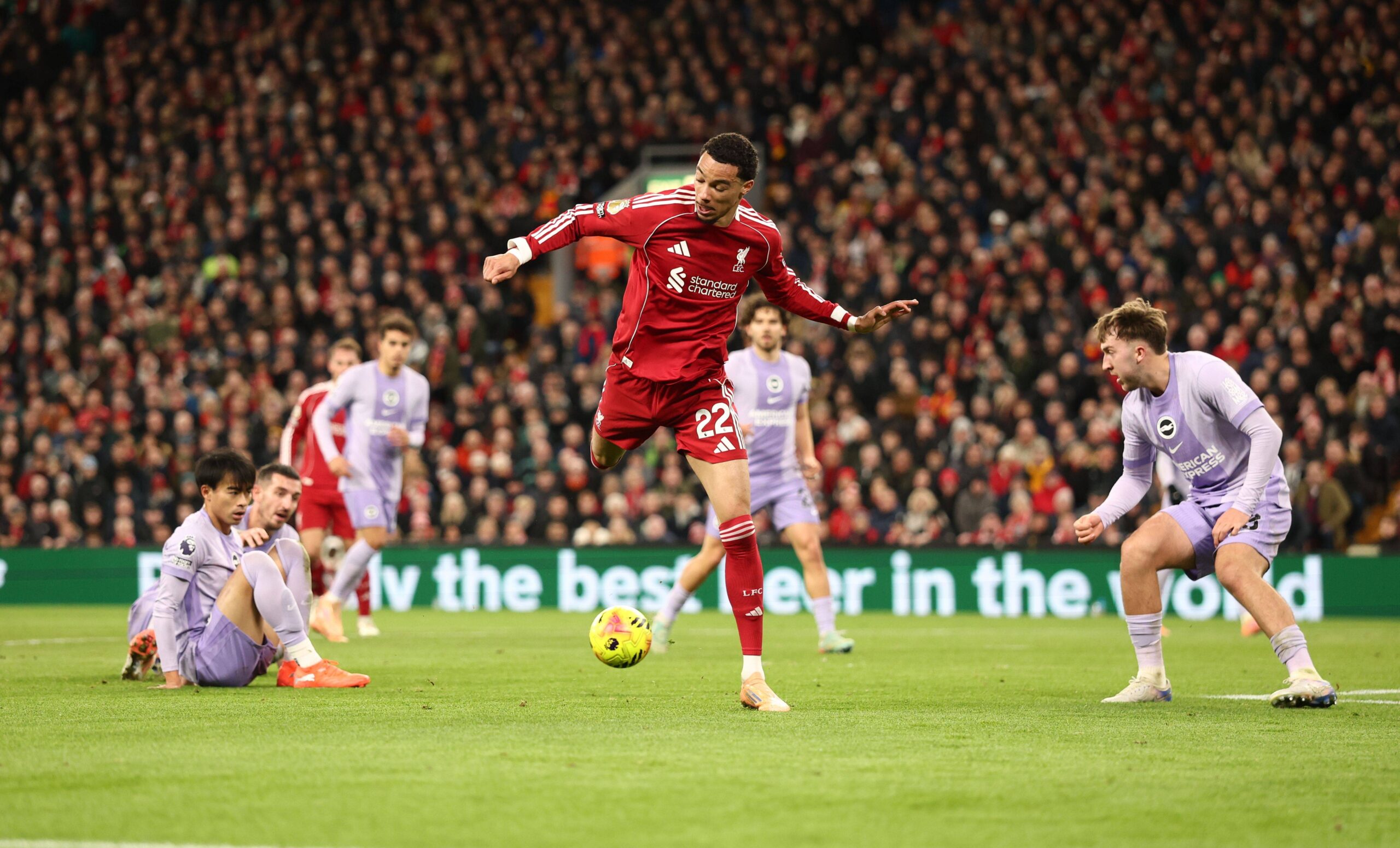 Hugo Ekitike of Liverpool runs onto goal. Liverpool v Brighton and Hove Albion, Premier League, Football, Anfield
Authority at the Tip of the Attack
Hugo Ekitike of Liverpool runs onto goal. Liverpool v Brighton and Hove Albion, Premier League, Football, Anfield
Authority at the Tip of the Attack
There was a calm certainty about Hugo Ekitike’s performance against Brighton that has been absent from Liverpool’s forward line for much of this season. In a campaign defined by hesitation, imbalance, and uncertainty, the French striker delivered something refreshingly simple: a centre-forward display built on timing, intelligence, and conviction.
From the opening minutes, Ekitike played like a striker who understands responsibility. His movement was sharp without being frantic, constantly pinning Brighton’s centre-backs and forcing them to make decisions they did not want to make. He didn’t drift aimlessly or look for the game to come to him. Instead, he dictated where the ball should go by occupying the right spaces at the right time.
Both goals reflected that clarity. The first was ruthless and composed, the second confident and instinctive. Yet it was the work between those moments that truly underlined his importance. Liverpool have struggled badly when pressed this season, often unable to get out of their own third without panic. Ekitike gave them an outlet — holding the ball up, linking play, and allowing midfield runners like Curtis Jones and Dominik Szoboszlai to arrive higher with purpose rather than desperation.
This was not a performance fuelled by chaos or chance. It was structure, control, and awareness — exactly what this Liverpool side has been crying out for.
Why Ekitike Is Now the Number OneThere will be debate about Alexander Isak, and rightly so. He is a high-level striker with proven pedigree. But football is not played on reputation alone, and right now Ekitike has earned the right to lead the line.
On current form, he offers more balance to this side. His willingness to work across the front line, his understanding of when to drop and when to stretch play, and his growing confidence in front of goal all make Liverpool less predictable. Crucially, he reduces the burden on a midfield that has too often been exposed by a lack of protection further forward.
That does not mean Isak is finished or sidelined permanently. Quite the opposite. The emergence of Ekitike creates options — genuine ones. Together, they can form a complementary pairing in matches that require physicality and depth. As lone strikers, competition will sharpen standards rather than dilute them.
For the first time in weeks, Liverpool look like a team with a functional focal point. That matters. When your striker sets the tone, others follow. Brighton were never comfortable, never able to push their line up with confidence, and never allowed to dictate territory. That alone is worth its weight in points.
If Liverpool are serious about stabilising their season and building toward something sustainable, Hugo Ekitike must now be considered the first-choice striker. Until Isak finds rhythm and authority of his own, the shirt belongs to the man who earned it — and on this evidence, Ekitike has done exactly that.

Player Ratings: Ekitike Leads as Liverpool Control Brighton at Anfield

The Premier League’s return saw the Reds host Brighton, as the Champions League win over Inter needed to be transitioned into their domestic form.
The lineup and subsequent ratings are listed below.
Alisson Becker – 7.0The giant Brazilian stopper was clinical early on with his solid save to keep the opposition out. Solid distribution was needed to keep the reds pushing out with urgency.
The England fullback was a creative fulcrum and the assist was perfectly timed before he left the field with an injury
Subbed – 26 mins
Milos Kerkez – 7.0The Hungarian international was very good and had yet another fine outing at fullback. Whether as a facilitator of attacks or of resistance, he matured further with a polished performance.
Ibrahima Konaté – 7.0The French international defender was powerful and assertive as he played another consistent game.
Virgil van Dijk – 7.0The captain and leader of this team were commanding and authoritative against a quick and vibrant opponent.
Dominik Szoboszlai – 8.0The Hungarian skipper was in fine form and strode around the pitch with purpose, even when shifted to full back.
Subbed – 83 mins
Ryan Gravenberch – 6.0The Dutch midfielder was diligent and well placed to stop counters. Though he struggled with progression as he again took too many touches.
Curtis Jones – 8.0The England international was very good and productive again, as he thrived amongst a raft of midfielders built to swarm and overrun the opposition.
Alexis Mac Allister – 7.0The Argentina World Cup winner was a good conductor and progressive piece as he floated in and around the midfield area.
Hugo Ekitike – 9.0The French attacker was electric and clinical as he once again walked off with a brace of goals. With movement and desire matched by brilliance in finishing, the former PSG star rightly took the game’s plaudits.
Subbed – 78 mins
Man of the Match Florian Wirtz – 7.0The German attacker was a fine conduit for the attack as he revived in that half-space. Another show of good link-up and a step towards his true and consistent level.
Subbed – 78 mins
Substitutions;Mohamed Salah – 7.0 (on 26)
Came on to assist a goal and perhaps bid his farewells.
Andy Robertson – 7.0 (on 78)
Came on.
Alexander Isak – 7.0 (on 78)
Came on.
Federico Chiesa – 7.0 (on 83)
Came on.
The Manager:Arne Slot – 8.0
The Dutch head coach was selective in his selection and resisted the chance to recall Mohamed Salah.
The substitutions were soon able to alter that decision as Joe Gomez succumbed to injury.
Steven Smith’s Pre-match Prediction:
Liverpool 3 – 1 Brighton

Liverpool Starting XI vs Brighton: Confirmed Team News and Predicted Lineup

Mohamed Salah is poised to rejoin the Liverpool squad for the visit of Brighton after constructive discussions with Arne Slot on Friday. The forward had been absent for the midweek Champions League win over Inter Milan, a decision taken in the aftermath of his extraordinary outburst following the dramatic 3-3 draw with Leeds. That omission sharpened the focus on a relationship under strain, even as Liverpool continue to navigate a demanding winter schedule.
Salah recall brings focus and uncertaintySalah had again been left as an unused substitute at Elland Road, then spoke to reporters afterwards, claiming he had been made a scapegoat for Liverpool’s uneven form and that he had been “thrown under the bus”. Slot declined to confirm at his pre match press conference whether the Egyptian would be involved against Brighton, stressing that further dialogue was required. Those talks have since proved positive, with Salah now expected to be named in the Anfield squad, offering supporters at least a temporary farewell before heading to Morocco for the Africa Cup of Nations with Egypt. His longer term future remains unclear, adding intrigue to a fixture that already carries weight.
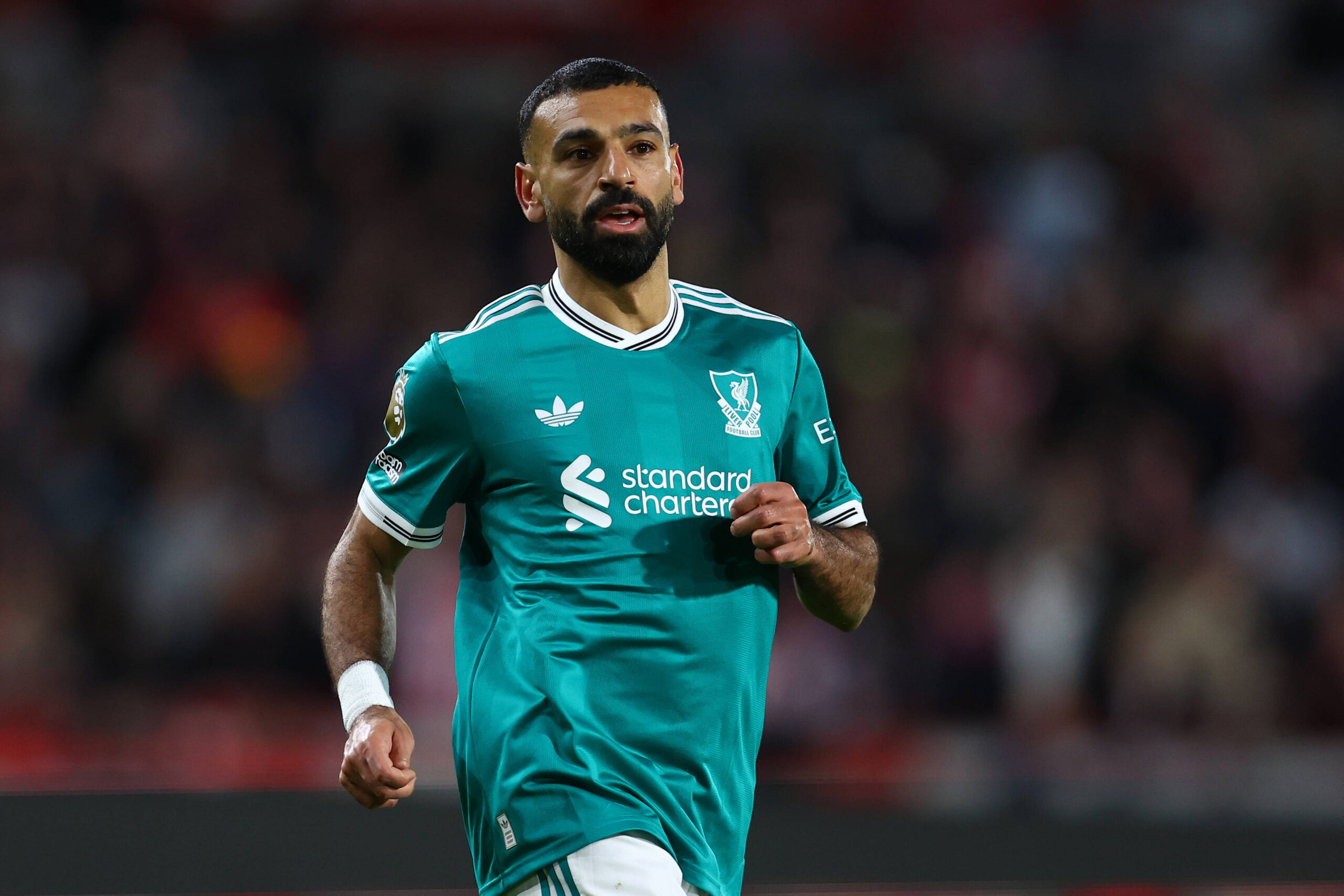 Photo: IMAGO
Selection puzzles sharpen against Brighton
Photo: IMAGO
Selection puzzles sharpen against Brighton
A place on the bench may await Salah on his recall. Slot has leaned towards a partnership of Alexander Isak and Hugo Ekitike, particularly with Cody Gakpo sidelined by a muscle injury. Isak did pick up a knock in the first half against Inter, and Slot suggested he may not be able to start against Brighton, though completing 68 minutes at the San Siro points to a minor issue rather than a significant concern.
Florian Wirtz, who won the decisive penalty from the bench in Italy, is pressing for a return to the starting XI. The German could replace Curtis Jones in a diamond midfield alongside Alexis Mac Allister, Ryan Gravenberch and Dominik Szoboszlai, a configuration designed to control tempo and supply the forwards.
Defensive decisions shape Liverpool approachAt left back, Slot faces a meaningful call, with the more attack minded Milos Kerkez pushing for selection ahead of Andy Robertson. On the opposite flank, Jeremie Frimpong is edging closer to a comeback after six weeks out with a hamstring injury, but caution is likely, leaving Joe Gomez to continue at right back as Conor Bradley serves a suspension.
Availability update and match detailsFederico Chiesa has recovered from illness and is available, while Wataru Endo faces weeks on the sidelines with an ankle problem. Giovanni Leoni remains a long term absentee. The stage is set for Liverpool against Brighton at Anfield, a 3pm GMT kick off on Saturday December 13, 2025, where selection, diplomacy and momentum intersect once more.

Milos Kerkez shares the lesson he has learned since joining Liverpool

Momentum can be fleeting in the Premier League, something Liverpool know better than most. After a confidence lifting Champions League win away at Internazionale, attention turns quickly to domestic business and a Brighton side that rarely offers comfort. For Milos Kerkez, the message is simple, results now matter, especially at Anfield.
The full back was clear about the challenge facing Arne Slot’s Liverpool, framing Saturday’s fixture as an opportunity to reassert authority at home. As he put it, “Every game in the Premier League is tough. That’s what I learned when I came here. You have to be 100 per cent focused every game because everyone can beat everyone.”
That realism reflects both Liverpool’s recent inconsistency and the demands of Slot’s first title defence. Winning the Premier League last season reset expectations, yet it also raised the weekly standard required.
Kerkez stressed the importance of restoring the psychological weight of Anfield, something Liverpool have historically relied upon. “We have to bring back that feeling that when you play in Anfield you cannot play easily. Hopefully everyone will be ready. It will be an important three points.”
Slot’s side arrive physically and mentally encouraged after San Siro. “But I’m sure now after the Inter game we will be ready physically, mentally and obviously we play at home,” Kerkez added. The emphasis on energy and mindset fits Slot’s preference for controlled intensity rather than emotional chaos.
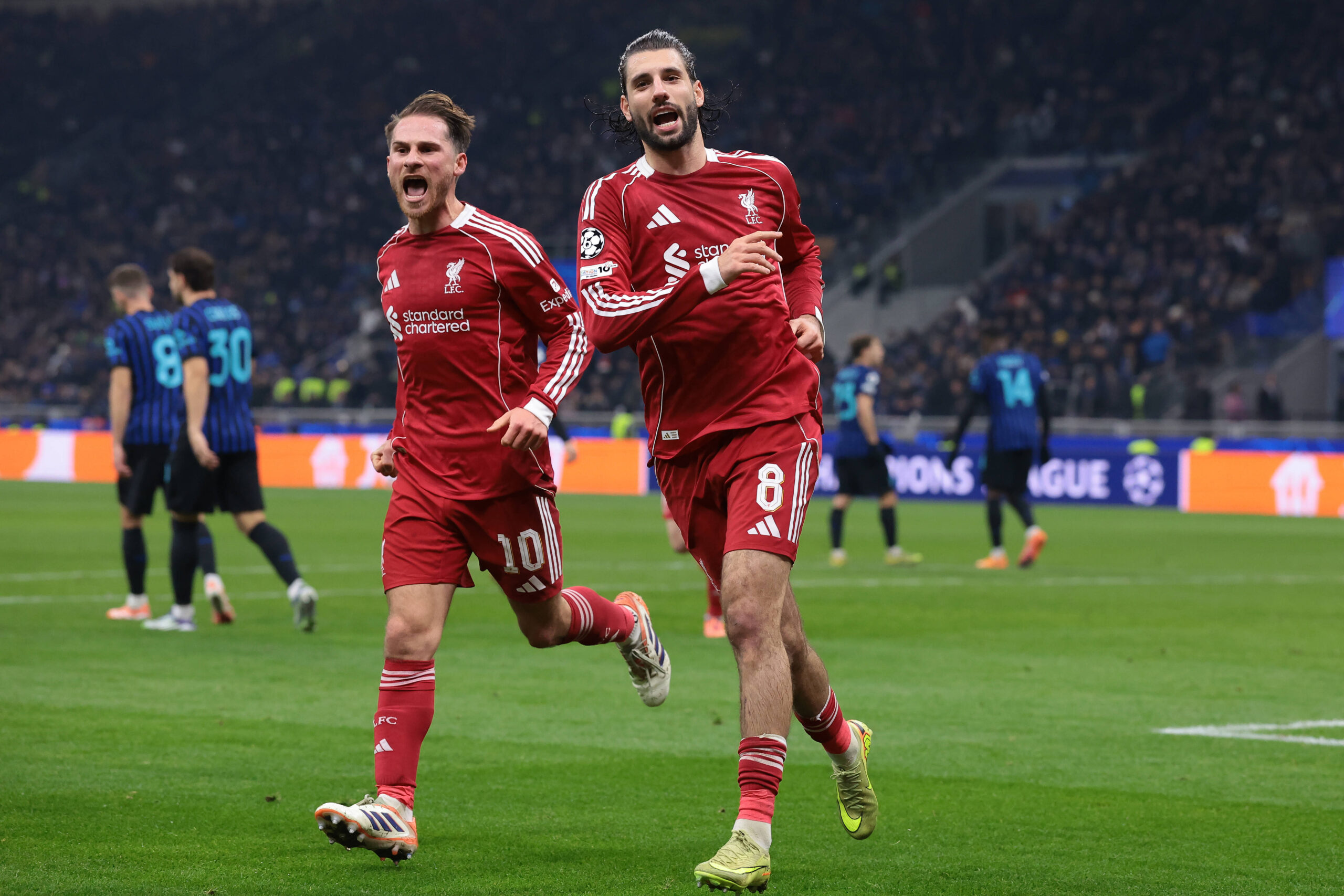 Photo: IMAGO
Photo: IMAGO
The Brighton game also carries league significance. “I think this was really important against Inter and I think now we have to continue with Brighton. It’s going to be even more important to start to make points in the Premier League,” Kerkez said, before hinting at broader ambitions. “Hopefully in the next few months we can do something else and fight for something.”
Confidence from European nightsKerkez returned repeatedly to confidence and cohesion, hallmarks of Liverpool at their best. Reflecting on the midweek victory, he explained, “It was really important for confidence and for the boost in the team to bring back the consistency that we need in the future games.”
Beating an unbeaten Inter side mattered. “They were unbeaten for a lot of games and [they’re] a good team and tough to play against. It’s important for confidence. Big games are coming up for us,” he said.
That belief extends internally. “The group is really, really together and we are really close to each other. We really want to turn things around,” Kerkez insisted, underlining the collective responsibility Slot often references.
Competition, defence and leadershipRotation has been an adjustment. “It’s the first time for me that I play every three days,” Kerkez admitted, highlighting his rivalry with Andy Robertson as constructive. “We are pushing each other a lot. It’s a positive competition and I’m learning a lot from him.”
Defensive improvement has been another focus. “We talk a lot about it and [it’s] just doing the basics good to make the clean sheets,” he said, pointing to the value of protecting Alisson Becker.
Kerkez also praised leadership figures, singling out Dominik Szoboszlai. “I would say this year he’s taken it to another level,” he said, noting his influence alongside Virgil van Dijk, Mohamed Salah and Robertson. In a Liverpool side balancing renewal with expectation, those voices remain central.

Liverpool told to sign Premier League defender in surprise move

Liverpool drift towards January with a sense of unfinished business. Injuries, form and future planning have combined to make this winter window feel heavier than most. As Anfield Watch reported, one Premier League star has now been told that Merseyside, not Barcelona, should be his next destination. That advice opens up a wider conversation about what Liverpool actually need, and what they can realistically do.
January pressure points at AnfieldLiverpool’s squad planning suddenly feels exposed. Giovanni Leoni’s injury has left the defence stretched, while Ibrahima Konate’s contract situation lingers uncomfortably in the background. Add to that a run of results where performances have dipped sharply, and January starts to resemble a repair job rather than a luxury upgrade.
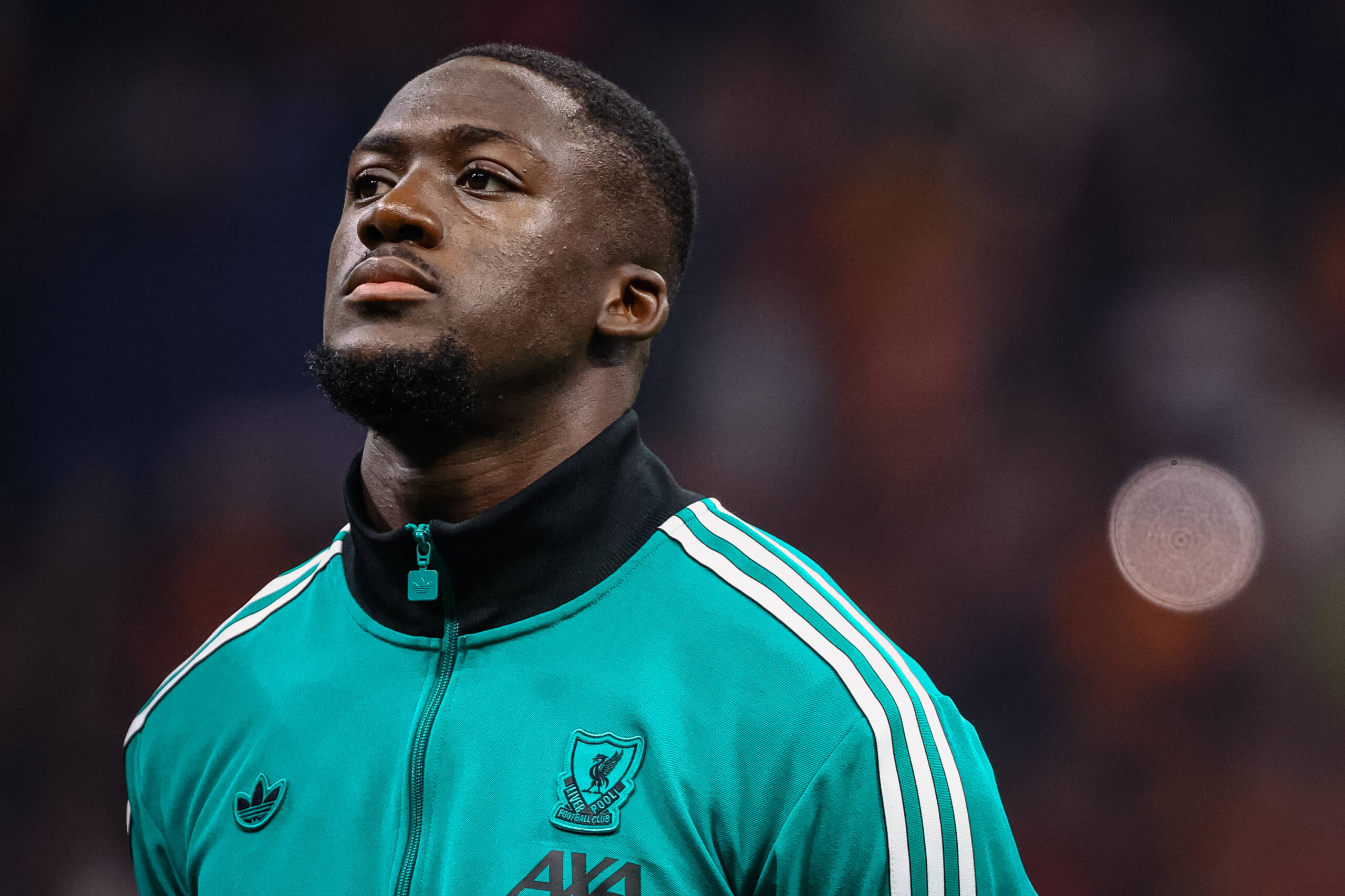 Photo IMAGO
Photo IMAGO
Questions stack up quickly. Is a centre back required, possibly more than one. Does the midfield need steel in a defensive role. Or is the real issue higher up the pitch, where the long term handling of Mo Salah remains unresolved and Luis Diaz was never truly replaced. Windows like this test recruitment departments because urgency rarely pairs well with value.
Daniel Munoz has become a natural talking point. Crystal Palace’s Colombian wingback has been one of the most dynamic full backs in the league, offering relentless energy and direct running. He looks built for intensity, comfortable defending wide spaces and attacking them with equal enthusiasm.
That profile explains why Barcelona have been linked, but also why doubts exist. Juan Camilo Zuniga articulated those concerns clearly when he urged Munoz to stay in England and head for Liverpool instead.
“Because of Dani’s style of play, I would put him at Liverpool,” he told Caracol Radio.
“A team with a lot of attacking and box-to-box play would be a great fit for Liverpool because Dani is very active, so he attacks the spaces a lot. So, I would keep him in the Premier League.
“Yes, I would keep him in the Premier League because the slow, methodical style doesn’t suit him. He’s more of an attacker, looking to exploit space. Barcelona gives him a lot of possession, taking the ball there, bringing it back. It’s more of a premium style.”
Squad logic versus transfer temptationRomance aside, logic pushes back. Liverpool are well stocked at right back with Conor Bradley and Jeremie Frimpong, both capable as wingbacks. Spending heavily on another option feels indulgent when other areas are thinner. Palace, too, may have reached their limit, having already navigated serious interest in Marc Guehi and Adam Wharton.
Munoz looks every inch a Liverpool level footballer, but timing and fit matter. January windows punish sentimentality.
Credit to Anfield Watch for the original reporting.
Our View – Anfield Index AnalysisThis report lands somewhere between excitement and scepticism for many Liverpool supporters. On one hand, Munoz feels tailor made for Premier League chaos, the kind of player you imagine flying into challenges at Goodison or surging down the flank on a European night. Fans crave energy right now, something to jolt a side that has looked flat and predictable.
But there is also concern about priorities. Right back feels like a solved problem compared to centre back depth or the growing anxiety around Salah’s future. Under Arne Slot, Liverpool are still defining their identity, and recruitment needs to reinforce that vision rather than add noise. Supporters remember too many January deals that solved nothing.
There is also fatigue around Crystal Palace links. It starts to feel repetitive, almost lazy, even when the player is genuinely good. Fans want clarity and decisiveness, not opportunism.
Ultimately, Munoz excites, but he also distracts. Liverpool need fixes, not flourishes. If January brings action, supporters want it to feel purposeful, calm and aligned with where the club is going, not simply a response to form wobbling at the wrong moment.

